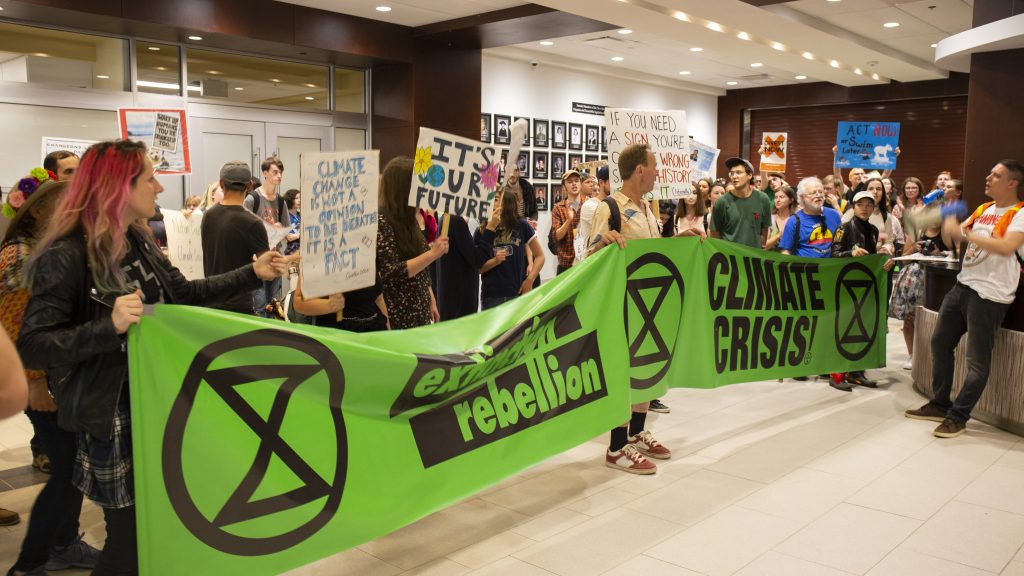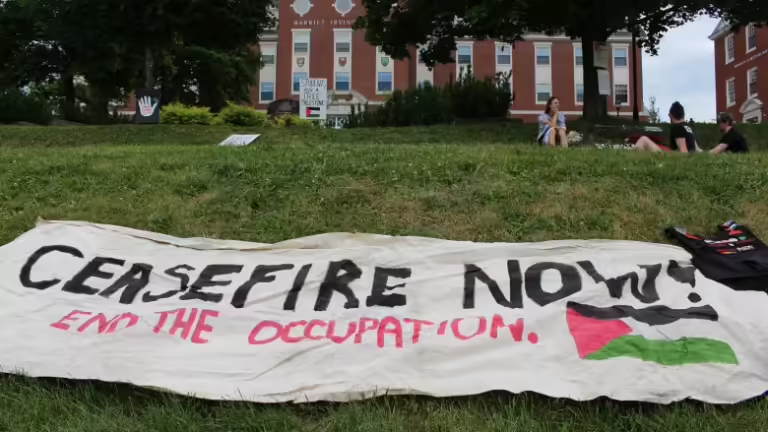From climate change to parking, rallies have become increasingly popular among the younger population in Fredericton and around the world. March for Our Lives, a youth-led gun control movement, was led by a number of students from Parkland, Florida. Greta Thunberg’s determination for political action on climate change, where she sat outside the Swedish Parliament, began the Friday’s for Future strikes.
So why are young people choosing to rally as opposed to other means of sharing their concerns or engaging in politics?
Aaron Cabot, a 3rd year UNB student, started the Facebook event “Sitting by Facilities Management Because We Can’t Find Parking”, which received a lot of attention from the UNB community. 490 people responded interested, with 147 indicating that they would attend. Of that 147, only about a dozen students actually stopped by.
Cabot was inspired by other events like the climate strike. He saw them as a great way to put people together and convey a message.
He felt he didn’t have enough information on his own to just write a formal letter of complaint, but after holding the event and hearing the stories that others shared with him, he feels he now has enough scope of the situation to be able to write a letter or do something more.
Cabot described holding a rally as a way to build a community around an issue or a cause. He also believes this can be accomplished over social media.
“Even if you are saying you are going or not, whether you actually go, it creates a sense of community,” he said.
Media coverage of an event can prime individuals about the importance of issues. There has been mass media coverage about the Climate Crisis and it thus became a big debate topic at this year’s federal election.
George C. Edwards III and Tami Swenson’s study, “Who Rallies? The Anatomy of a Rally Event”, which was published in 1997, explores the types of people who rallied in response to the missile attack on Iraq’s intelligence Headquarters in Baghdad.
“Rather than being a distinctive phenomenon, a rally event seems to be simply an additional force that pushes potential supporters over the threshold of approval,” states Edwards and Swenson in the study.
According to Emily Witt’s article from The New Yorker, “From Parkland to Sunrise: A Year of Extraordinary Youth Activism,” activism among students has been growing for years.
“[Student activism] had been growing for several years: United We Dream, the youth-led immigrant organization that advocated for the dream act and occupied the halls of Congress last spring, was founded in 2008; the anti-racism and anti-police-violence movement Black Lives Matter, which has since grown into the Movement for Black Lives, started in 2013,” she writes.
Witt also said, “unlike previous generations of youth activists, the ones today are eager to work within the existing political processes.”
It could be said rallies held in Fredericton over the past few months influenced voters in this riding in this year’s federal election, potentially resulting in the election of Jenica Atwin, the first Green MP outside of BC.




